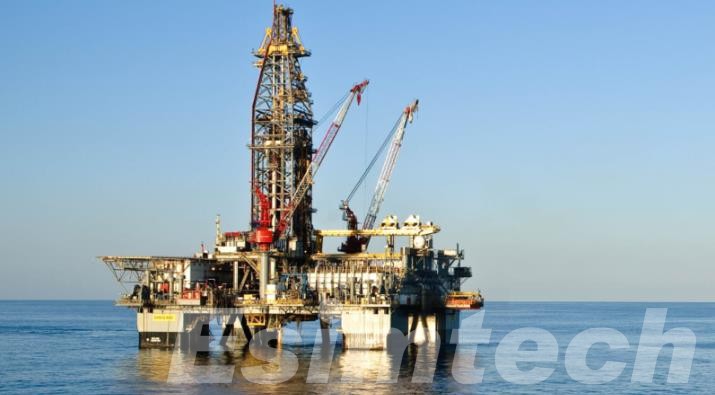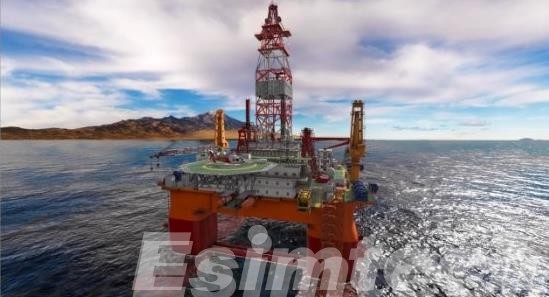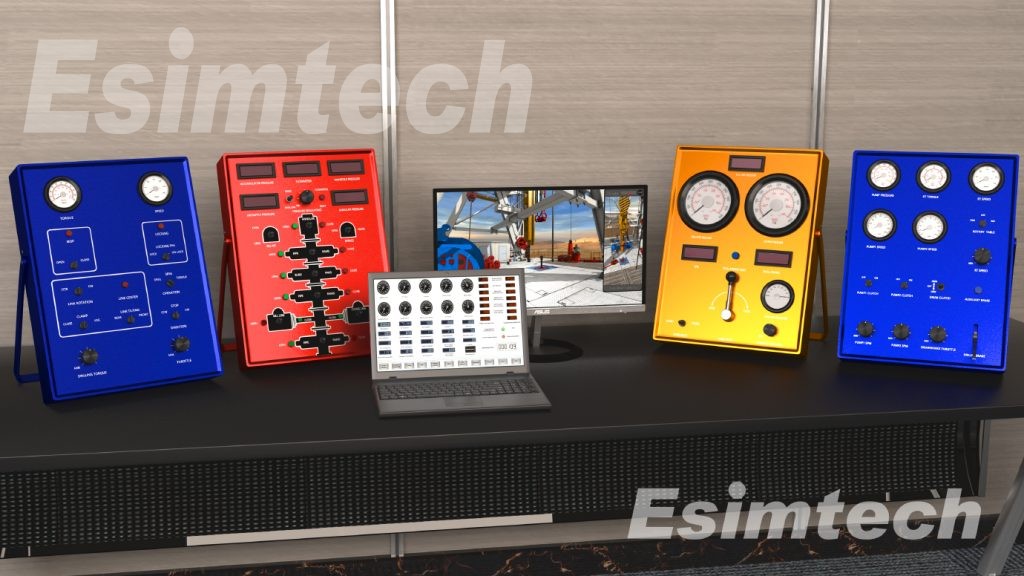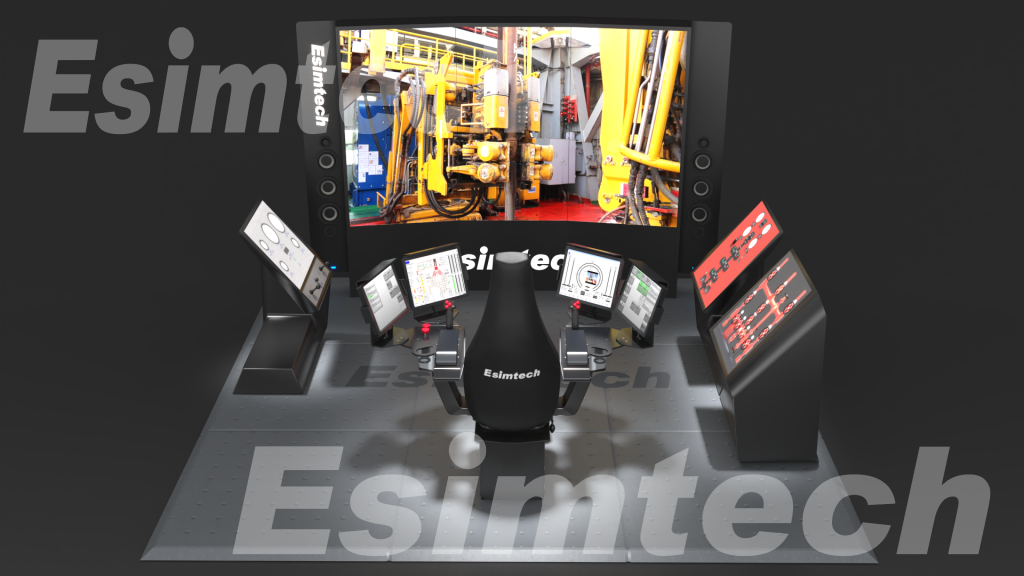Floating Oil Rigs – Physics, Types and How Simulators Contributing to Their Stability
In the vast expanse of the open sea, colossal structures known as oil rigs rise from the depths, seemingly defying the laws of physics by floating majestically on the water’s surface. The intriguing question that often arises is: Do oil rigs really float? The answer is both fascinating and complex, encompassing principles of buoyancy, engineering marvels, and the crucial role of drilling simulators. In this article, we embark on a journey to uncover the truth behind the buoyancy of oil rigs and delve into how simulators contribute to their innovation and efficiency.

The Physics of Floating Oil Rigs
The physics of floating oil rigs involves principles of buoyancy, stability, and hydrostatics. Oil rigs, also known as offshore platforms or drilling platforms, are structures used to extract oil and gas from beneath the sea floor. There are two main types of offshore platforms: fixed platforms and floating platforms. In this response, I will focus on the physics of floating oil rigs.
- Buoyancy
Buoyancy is the upward force exerted by a fluid (in this case, seawater) on an object immersed in it. The magnitude of this force is equal to the weight of the displaced fluid. For a floating oil rig, buoyancy is a crucial factor in keeping the platform afloat. The rig is designed to displace a volume of water that is equal to or greater than its own weight. This allows the rig to float rather than sink.
- Stability
Stability refers to the ability of an object to return to its original position after being displaced. Floating oil rigs need to be stable to withstand the various forces acting on them, including waves, currents, wind, and the weight of the equipment and structures on the platform. Stability is achieved through the placement of ballast (heavy materials) within the rig’s structure. By controlling the distribution of weight and ballast, the rig’s center of gravity is kept low, making it more stable against tilting or capsizing.
- Hydrostatics
Hydrostatics deals with the behavior of fluids at rest and the forces exerted by fluids on immersed objects. In the context of floating oil rigs, hydrostatics plays a role in determining the equilibrium of the platform. The pressure exerted by the surrounding water varies with depth, and this pressure difference contributes to the buoyant force that keeps the rig afloat.

Types of Floating Oil Rigs
There are several types of floating oil rigs, each with its own design and physics considerations:
Semi-Submersibles
These rigs have columns or pontoons that are submerged underwater. This provides stability by using the buoyant force of the submerged sections to counteract the weight above the waterline. The columns are connected to a deck that holds the drilling equipment.
Drillships
Drillships are ships that are equipped with drilling equipment. They have a deep hull that provides buoyancy and stability. Dynamic positioning systems or thrusters are used to maintain the position of the ship over the drilling site.
Tension Leg Platforms (TLPs)
TLPs use vertical tethers or tension legs to anchor the platform to the seabed. The tension legs provide stability by limiting the platform’s lateral movement while allowing vertical movement in response to waves.
Spar Platforms
Spar platforms are cylindrical structures that extend both above and below the water’s surface. The submerged section provides buoyancy, while the above-water section holds the drilling equipment and living quarters.
FPSOs (Floating Production Storage and Offloading)
FPSOs are used for production and storage rather than drilling. These vessels have processing facilities for oil and gas and are moored to the seabed. Buoyancy and stability are achieved through their hull design and ballast systems.
In summary, the physics of floating oil rigs involves utilizing the principles of buoyancy, stability, and hydrostatics to ensure that the rigs can remain afloat and operational in the challenging offshore environment. Various designs and technologies are employed to achieve this goal, depending on the specific type of floating rig.

Simulation of Offshore Oil Rigs
Simulation of offshore oil rigs involves the use of advanced technology to replicate and analyze various aspects of oil rig operations, including their design, drilling processes, safety protocols, and emergency response. Here’s an overview of how simulation is utilized for offshore oil rigs:
- Rig Design and Construction
Simulation is employed during the design phase to create virtual prototypes of the rig. This allows engineers to test different design configurations, assess structural integrity, and optimize the layout for safety and efficiency
- Buoyancy and Stability
Simulation helps in understanding how the rig maintains buoyancy and stability in different sea conditions. By modeling the rig’s structure, ballast systems, and the surrounding environment, engineers can ensure that the rig remains stable during drilling operations.
- Drilling Processes
Drilling simulations enable operators and engineers to practice and optimize drilling procedures in a virtual environment. This includes simulating the insertion of drill bits, mud circulation, well control, and actual drilling operations.
- Dynamic Responses
Simulations replicate the rig’s responses to various dynamic factors, such as waves, wind, and currents. This helps in predicting how these external forces will affect the rig’s stability, motion, and performance.

- Emergency Scenarios
Simulators are used to train personnel in responding to emergencies, such as blowouts or fires. Crew members can practice evacuation procedures, well control measures, and other critical safety protocols in a controlled virtual setting.
- Crew Training
Simulation is an essential tool for training rig personnel. New recruits can familiarize themselves with rig operations, equipment handling, and safety procedures before stepping onto a physical rig. Advanced simulations can even replicate the experience of being on a rig using virtual reality (VR) technology.
- Equipment Testing
Simulation allows for testing and optimizing the performance of drilling equipment, cranes, and other machinery. Engineers can assess how different equipment configurations affect operations and identify potential issues before they occur on the actual rig.
- Data Integration
Simulation platforms can be connected to real-time data feeds from operational rigs. This integration enables operators to make decisions based on actual data and respond to changing conditions in the virtual environment.
- Optimization and Efficiency
Through simulation, engineers can identify opportunities for improving operational efficiency. By analyzing different scenarios, they can determine the most effective strategies for drilling, equipment deployment, and crew management.
- Risk Mitigation
Simulations help identify potential risks and challenges associated with rig operations. By testing various scenarios virtually, operators can develop strategies to mitigate risks and enhance safety measures.
- Research and Development
Simulation is a valuable tool for testing new technologies, equipment, and processes before they are implemented on actual rigs. This accelerates the innovation process and reduces the risk associated with adopting new solutions.
Incorporating simulation into offshore oil rig operations enhances safety, reduces downtime, improves efficiency, and prepares personnel for various scenarios. As technology continues to evolve, the accuracy and realism of these simulations are expected to increase, contributing to a safer and more sustainable offshore exploration and production industry.
Conclusion
So, do oil rigs float? The resounding answer is yes, and their ability to float is a testament to the remarkable synergy between physics, engineering, and innovative technology. Buoyancy, a fundamental principle dating back to ancient times, continues to shape the design and operation of modern oil rigs. These offshore structures not only harness the principles of buoyancy but also leverage advanced simulators to ensure their stability, safety, and efficiency in the unpredictable marine environment. As our understanding of physics and technology continues to advance, oil rigs will remain steadfast on the water’s surface, exemplifying human achievement and determination in the face of nature’s challenges.

